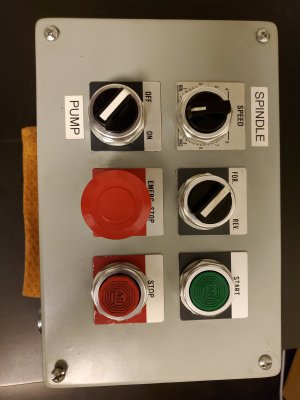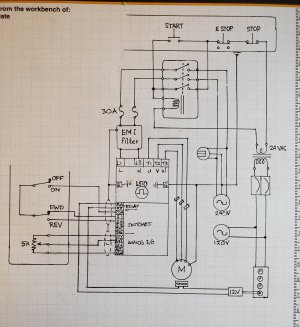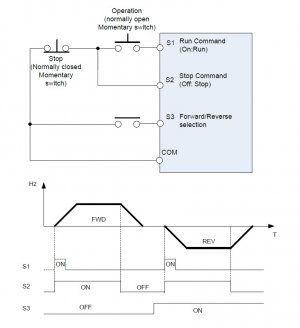Wow, tons of good info!
Thanks, everyone for taking the time to respond. Sorry I haven’t had time to reply individually, but it’s all been helpful.
I will stick with the L510 since I have a basic grasp on what it can do, and how to tweak it. It can run as low as 6Hz and has SLV mode and built in braking.
The WJ200 would probably be my second choice.
I have a control box that had been retrofitted to my lathe, with six Allen-Bradley switches/10K pot. That will be perfect to control a power-latched contactor and three-wire low V control as mksj suggests above. The lathe also provides a circuit breaker, fuse blocks and the contactor, which has a 24V coil and a transformer, so there will be no high voltage current in the control box. I will also add an EMI filter, and an auxiliary cooling fan for the machine motor which will run when the motor is operating at a low speed and prone to overheating.
Finally managed to add a photo. I can only get it in as a thumbnail link.
Anyway, I'll remove the 'spindle' and 'pump' stickers and swap the On/Off switch and Start pushbutton. So the top row will be spindle controls (speed, direction, on/off).
The bottom row will control the contactor which powers and shuts down the whole thing.
Thanks, everyone for taking the time to respond. Sorry I haven’t had time to reply individually, but it’s all been helpful.
I will stick with the L510 since I have a basic grasp on what it can do, and how to tweak it. It can run as low as 6Hz and has SLV mode and built in braking.
The WJ200 would probably be my second choice.
I have a control box that had been retrofitted to my lathe, with six Allen-Bradley switches/10K pot. That will be perfect to control a power-latched contactor and three-wire low V control as mksj suggests above. The lathe also provides a circuit breaker, fuse blocks and the contactor, which has a 24V coil and a transformer, so there will be no high voltage current in the control box. I will also add an EMI filter, and an auxiliary cooling fan for the machine motor which will run when the motor is operating at a low speed and prone to overheating.
Finally managed to add a photo. I can only get it in as a thumbnail link.
Anyway, I'll remove the 'spindle' and 'pump' stickers and swap the On/Off switch and Start pushbutton. So the top row will be spindle controls (speed, direction, on/off).
The bottom row will control the contactor which powers and shuts down the whole thing.
Attachments
Last edited:




